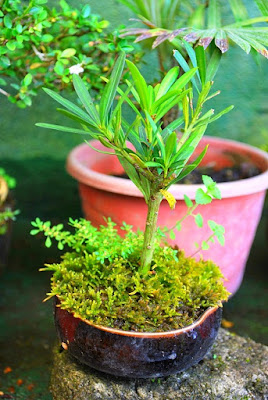Search This Blog
Sightseeing Magat River
Magat Dam is the Southeast Asia's first large multipurpose dam. Magat Dam is a large rock-fill dam on the island of Luzon in the Philippines. The dam is located on Magat River, a major tributary of Cagayan River. Construction of the dam started in 1975 and completed in 1982. Magat Dam is one of the largest dams in the Philippines and has two primary purposes: as a source of irrigation water and as a provider of hydroelectric power.
The construction and appurtenant structures was authorized by P.D. 693 signed on May 7, 1975 by the late President Ferdinand E. Marcos. The Magat Dam was constructed in 1978 and inaugurated by the Late Pres. Ferdinand E. Marcos on October 27, 1982 and started operations in 1983.
Implementation of this multipurpose project was based on the preliminary study conducted in 1973 by the National Irrigation Administration (NIA) with the assistance of the United States Bureau of Reclamation (USBR) and the United States Agency for International Development (USAID).
Subsequent detailed and extensive dam site investigation and engineering studies further confirmed the feasibility of what is now known as NIA's most daring infrastructure project and one of Asia's biggest dams today.
It was Southeast Asia's first large multipurpose dam. The dam is part of the Magat River Multipurpose Project (MRMP) which was financed by the World Bank and whose purpose is to improve on the existing Magat River Irrigation System (MARIS) and to triple the production of rice in the Cagayan River basin.
El Nido Tour B
El Nido Tour B
El Nido Islands to Visit
Snake Island
Cudugnon Cave
Cathedral Cave
Inabuyutan Island
Pangulasian Island
This Tour is a very nice sight seeing tour with some snorkeling. In calm days the reef in front of Pangulasian is a very nice snorkel spot. Look out for Turtles and black tip sharks.
The island was called Snake Island not because it has snakes. It is because of a long sand bar that looks like a snake from afar and is clearly visible only when the tide is low. On both sides of the sand bar are shallow swimming areas. The opposing currents bring a myriad of interesting rocks, stones, bits of coral, and shells to both sides of the sand bridge. It connect two islands on both end.
Codugnon Cave, entrance to this sea cave is right on the shore a couple of steps to the left. To get in, you must crawl through a hole. The cave has beautiful limestone and marble walls, in various shades of brown, green, blue, white, and gray, and several light sources on the ceiling. The floor is sand, and the cave becomes filled with water during high tide.
Pangalusian Island, El Nido - It has one of the widest stretches of powdery white beaches in El Nido, which is very ideal for sun bathing, sunset viewing, and other beach activities. The waters fronting the beach are clusters of coral reefs that make this area a good snorkeling and diving site. A trail located in the middle of the island is a good place for birdwatching, especially during early mornings and late afternoons. The trail ends at the peak of the island and provides and an excellent 360-degree view of the Bacuit Bay and nearby islands.
El Nido Islands to Visit
Snake Island
Cudugnon Cave
Cathedral Cave
Inabuyutan Island
Pangulasian Island
This Tour is a very nice sight seeing tour with some snorkeling. In calm days the reef in front of Pangulasian is a very nice snorkel spot. Look out for Turtles and black tip sharks.
The island was called Snake Island not because it has snakes. It is because of a long sand bar that looks like a snake from afar and is clearly visible only when the tide is low. On both sides of the sand bar are shallow swimming areas. The opposing currents bring a myriad of interesting rocks, stones, bits of coral, and shells to both sides of the sand bridge. It connect two islands on both end.
Codugnon Cave, entrance to this sea cave is right on the shore a couple of steps to the left. To get in, you must crawl through a hole. The cave has beautiful limestone and marble walls, in various shades of brown, green, blue, white, and gray, and several light sources on the ceiling. The floor is sand, and the cave becomes filled with water during high tide.
Pangalusian Island, El Nido - It has one of the widest stretches of powdery white beaches in El Nido, which is very ideal for sun bathing, sunset viewing, and other beach activities. The waters fronting the beach are clusters of coral reefs that make this area a good snorkeling and diving site. A trail located in the middle of the island is a good place for birdwatching, especially during early mornings and late afternoons. The trail ends at the peak of the island and provides and an excellent 360-degree view of the Bacuit Bay and nearby islands.
Mount Mayon
Mount Mayon is as alluring as it is deadly: tourists are constantly drawn to the near-perfect cone for its picturesque symmetry as well as for bragging rights to having scaled one of the planet's deadliest volcanoes.
Mayon Volcano has a dramatically perfect cone shape that stands out in the landscape outside of Legazpi City, Albay. Of course, it’s also one of the most active volcanos in the Philippines. In the past 400 years it has erupted 49 times.
Subscribe to:
Comments (Atom)














